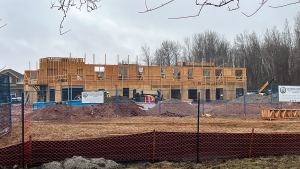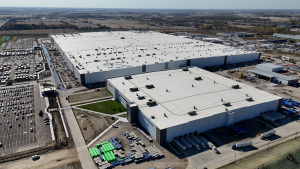A new BuildForce Canada report brought together different groups in the construction industry to provide some guidance as to the kinds of reforms needed to the current immigration system to help bolster the sector.
The report recommends the adoption of four consensus principles by governments to ensure the construction sector can better access skilled workers from abroad in an effort to address projected shortages of skilled labour created by rising construction demands and changing demographics, said Bill Ferreira, executive director of BuildForce Canada.
“The report is intended to provide an informational base for the industry,” he said. “It is intended to provide the collective views of the individuals that were part of the steering committee. It’s there to essentially provide the information the industry needs to then develop their own recommendations to government, should they feel that additional recommendations are required.”
The industry steering committee that contributed to the report consists of representatives from Canada’s Building Trades Unions (CBTU), the Canadian Construction Association, the Canadian Home Builders’ Association, Merit Canada and the Mechanical Contractors Association of Canada.
Addressing educational bias
The first recommendation is addressing educational bias in the Express Entry selection system as it currently and disproportionately favours applicants with high education levels and excludes others who possess the skills or willingness to work in construction.
“We looked at the educational profiles of the individuals being admitted into the country, looking at different periods just for principle applicants. What we found was that principle applicants in the period between 1980 and 1990, individuals with trades certificates and non-apprenticeable trades certificates came into the country, about nine per cent of the overall admissions were for individuals with apprenticeable trades certificates and non-apprenticeable trades certificates together,” he said. “Whereas the share of individuals with university education, so bachelor’s and above were about 34 per cent.”
When the team looked at the most recent period, despite the introduction of the federal skilled trades program, there was a decline in admissions of principle applicants with apprenticeable trades certificates or non-apprenticeable trades certificates and the number of individuals admitted with university educations increased dramatically.
“Apprenticeable and non-apprenticeable trades certificates are now down about two per cent, whereas individuals with university education are now up to about 75 per cent of the overall admissions on an annual basis,” said Ferreira, adding about 76 per cent of the overall labour force are NOC Category 7, which have struggled to obtain entry under Canada’s existing Express Entry system.
The Canadian Home Builders’ Association (CHBA) emphasized this is one of the key barriers to addressing the labour shortage.
“For CHBA, the most pressing need is to address the education bias within the immigration points system, in order to better align with labour market needs,” said a spokesperson for the association. “For the residential construction sector, the means allowing for construction trade helpers and labourers in NOC TEERs 4 and 5, and which make up a substantial portion of the construction workforce and are in the highest demand, entry to Canada to help address the housing affordability crisis.”
Better alignment needed
The other report recommendations include better aligning federal and provincial immigration policies and increasing transparency; ensuring industry involvement in labour market planning, analysis and recruitment; and supporting competencies-based skills assessments for foreign credential recognition.
“We have certain trades and certain jurisdictions who require more tradespeople. We’re doing everything we can to bring as many Canadian tradespeople in as we possibly can, but some of our trades and some of our jurisdictions would like to see if there is an avenue that we can explore through immigration to help meet our labour force requirements,” stated Sean Strickland, chair of BuildForce Canada and executive director of the CBTU. “It’s important for us to have an immigration system in Canada that works for the construction industry. That’s the reason for the report.”
Stakeholders are going to take the recommendations and use them to advocate with government to make changes to better reflect the labour force requirements in the construction industry, he added.
“All the stakeholders don’t agree on all the different ways in which we need to do this, but through this report there is a general agreement from the industry that things need to change for immigration federally and provincially to help us meet some of our labour force requirements,” Strickland said.
“Our recommendation from the unionized perspective is that we need to be adaptable here and recognize that one size doesn’t fit all. Immigration requirements aren’t for all trades and all regions.”
Ken Lancastle, COO of the Mechanical Contractors Association of Canada, said BuildForce did a good job of capturing a lot of the concerns the sector is facing right now.
“It gives us a leg to stand on when it comes to some of these discussions around immigration reform,” said Lancastle.
“We’ve talked about this for a number of years, about how there needs to be reforms made to the immigration system to adapt to the unique needs of the construction industry. This gives us now some tangible data that we can point to and say, ‘This is what we’re talking about. This is a consensus-based report from multiple stakeholders in the industry.’”
The current immigration system is biased and does not necessarily pay attention to the immediate labour requirements that the economy needs, Lancastle added.
“The educational bias within the system, we would love to see more industry involvement, not just in immigration but also on skills training and recruitment across the country,” he added.
Follow the author on X/Twitter @DCN_Angela.











Recent Comments
comments for this post are closed